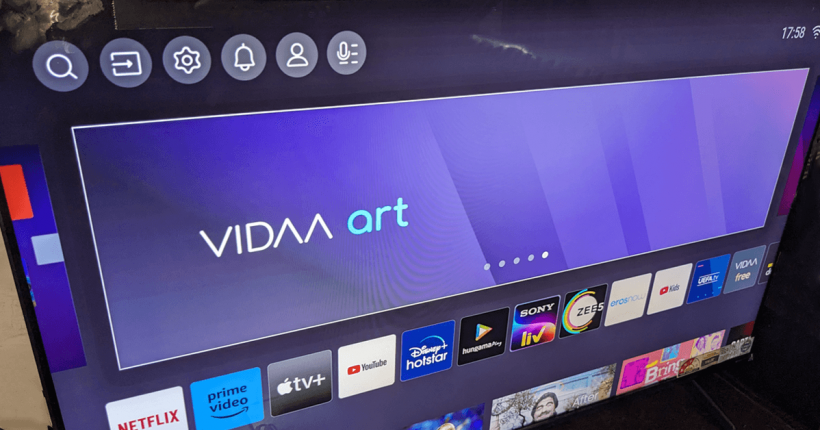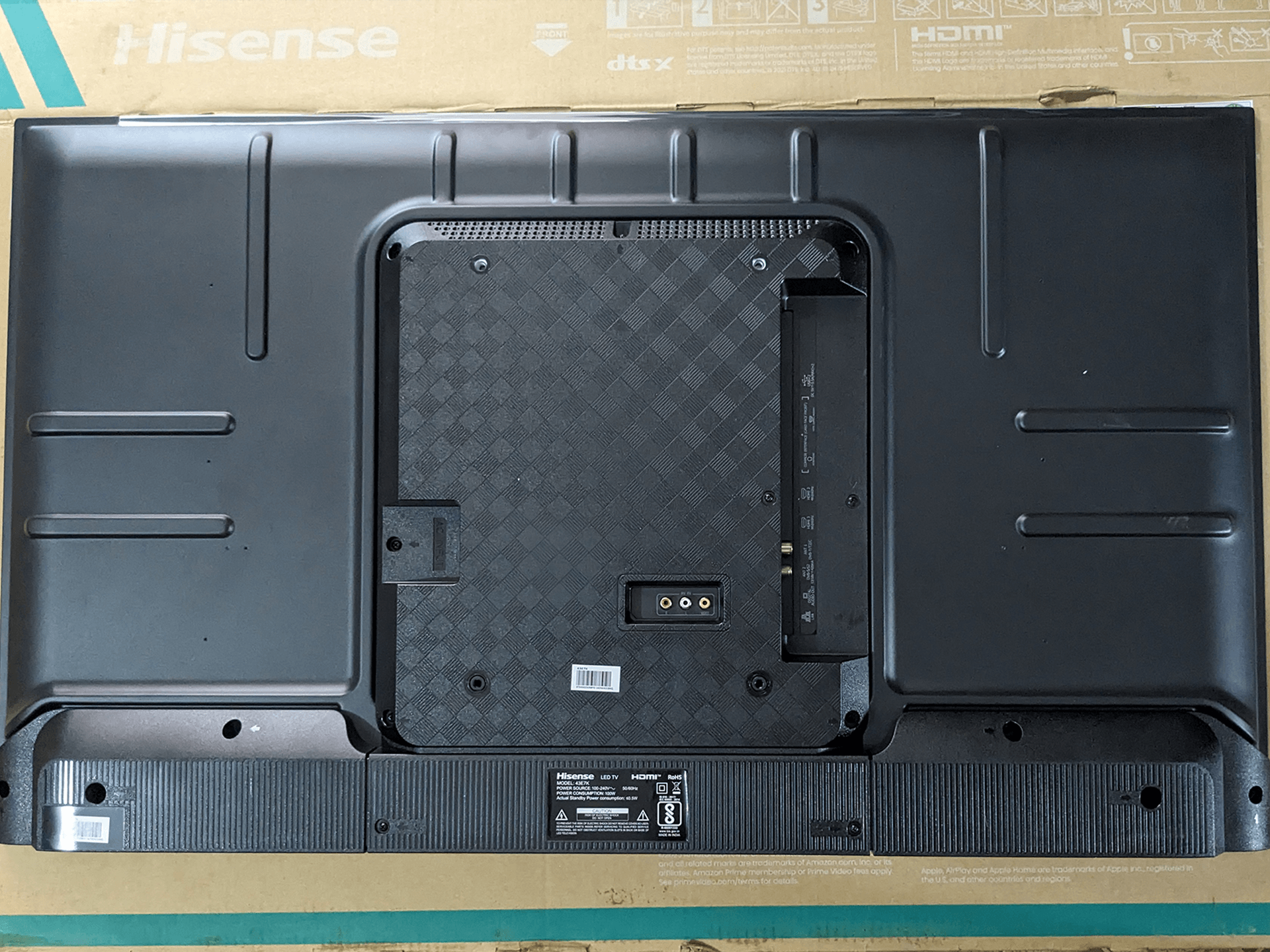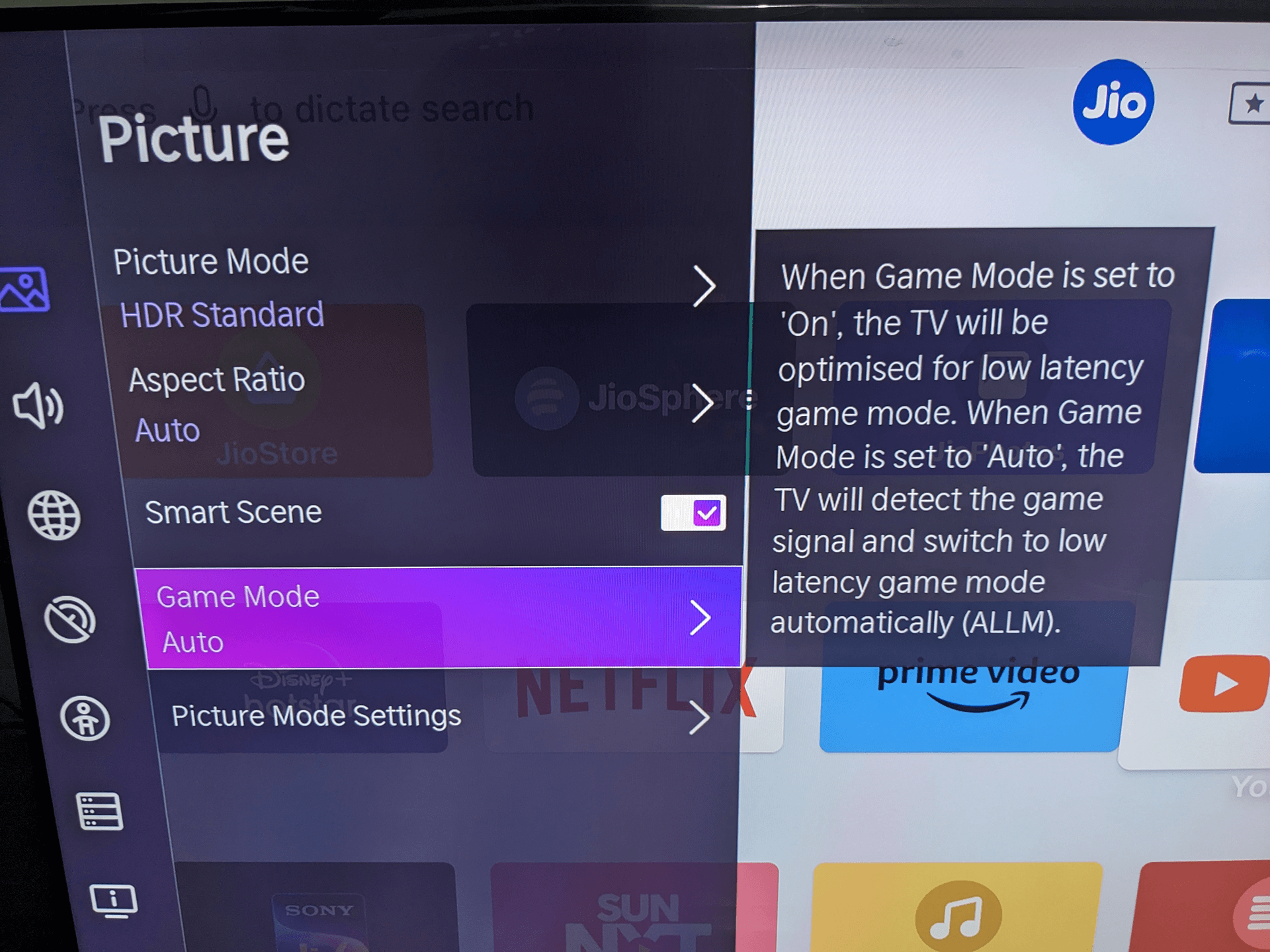
Hisense recently launched a few QLED TVs during the pre-Diwali sale (Amazon’s Great Indian Festival and Flipkart’s Big Billion Day) in India. Among these lies a good yet cheap QLED TV – Hisense E7K. You’d remember my review of Hisense E7K Pro QLED Gaming TV a few months ago. So, is E7K an underpowered predecessor to the E7K Pro? We will look into that in this article.
This will be a review-cum-comparison article. While reviewing Hisense E7K QLED TV and talking about its pros and cons, I will also compare it with the E7K Pro (Hisense E7K vs Hisense E7K Pro). The comparison will be done while reviewing the TV section-wise, meaning, there will not be a separate sub-heading on the comparison.
Let me tell you before we begin though that, this TV was launched on Flipkart, and with the sale currently, it’s available at very cheap prices, especially given it has a decent QLED panel. First, let’s take a quick look at its specs before we jump into the review.
Hisense Tornado E7K QLED TV Specs
- Display features: 4K Ultra HD (3840×2160), 60Hz 8-bit Panel, HDR10, Dolby Vision, HLG, MEMC
- Gaming features – ALLM, 60Hz VRR
- Connectivity: 3 HDMI, eARC supported on HDMI 1; 2 USB 2.0; Dual-band Wi-Fi; Bluetooth 4.2, etc.
- Sound features: 24W Speakers, Dolby Atmos
- Hardware: Quad-core processor, 4GB Storage
- Pre-installed Apps: Netflix, Disney+ Hotstar, Youtube, Prime Video, Sony LIV, Zee5, Plex, Free TV, etc.
- Available Sizes – 43″, 50″, 55″, 65″
The specs for the TV have been taken from both Hisense’s website and from the Flipkart product listing. Some aspects like the RAM capacity were ambiguous. So, I haven’t mentioned them above. Anyways, time for the review now. I will take each aspect of the TV and review it while concluding with the pros and cons.
Hisense E7K QLED TV Review
Panel Quality
[metaslider id=”1661″]
The VA panel is very good for the price. I couldn’t measure the brightness, but, it’s very similar to the E7K Pro, and will be a good fit for a not-so-well-lit room. Like the E7K Pro, this panel is reflective. So, you might find it difficult to watch it in a well-lit room. VA panels, as you would all know isn’t exactly well-suited for well-lit rooms. You can check the images above for the same.
Like the E7K Pro, increasing brightness over 50% fogs up the display, which is disappointing.
UPDATE: Reddit user, Darkness_Moulded clarified that on Vidaa TVs, brightness in traditional sense is controlled by the option called Backlight level. This is probably, a mislabelling error on the part of Hisense. The Brightness option on these TVs actually controls the black level instead. That being said, I did notice that changing the backlight level had 0 to minimal change in the brightness.
As for the colours, they are vibrant and sometimes, over-saturated, nothing that you can fix to your satisfaction by tweaking the settings. The viewing angles are good as well, with minimal loss of colours at extreme angles.
Being a VA panel, it also produces very good blacks. If you are wondering about banding on the panel, sorry to disappoint. Much like the E7K Pro’s panel, minimal vertical banding is visible, as seen in the image above. But, this, in no way, interfered with my content watching experience.
In a nutshell, E7K Pro and E7K both have similar, if not the same panels. A major difference though is that the E7K pro, being a gaming-centric TV comes with a 144Hz panel, that overclock itself it to 240Hz on demand, E7K comes with a 60Hz panel.
Another peculiarity is the floating glass display. This means that the actual panel protrudes a bit from the body of the TV (check the image above). It looks neat, but, I did notice some minor backlight leak at the edges. But, again, this in no way, affected the TV’s performance adversely.
| Pros | Cons |
| 1. Good viewing angles. 2. Very thin bezels. 3. Good colour reproduction. |
1. 60Hz panel. 2. Reflective panel. 3. Display fogs up on increasing brightness (Read Update above). |
Sound Quality

According to the official Hisense product listing, the TV comes with a 24W speaker setup, as opposed to E7K Pro’s sub-woofer setup with DTS Virtual X support. Thus, the backside lacks the speaker grills, you’d find on an E7K Pro. Still, the sound is very clear, crisp and loud even. It does lack the E7K Pro’s bass, but, it’s still good enough for the price.
I also noticed that the volume levels are more balanced when compared to the E7K Pro (Check my E7K Pro review to get a better idea).
While it does have eARC support (on HDMI 1), you might not get the same audio experience on gaming, as you’d get on an E7K Pro.
| Pros | Cons |
| 1. Good, loud and clear audio quality. 2. Well-balanced audio levels. |
1. Lacks bass. |
Content Watching
[metaslider id=”1666″]
The TV is good enough for content watching. But, when compared to the E7K Pro, it does lack support for many features or media profiles including Dolby Vision IQ, Filmmaker mode, etc. How does this affect the actual content watching experience? Let’s see one by one.
First, let’s talk about the upscaling capabilities. The TV upscales SD channels to 4K satisfactorily (check image above), but can’t hold a candle to the industry leaders – Sony, LG, etc. But, that’s completely justified given the price. As for HD and 4K content, I found them to be good, on par with the E7K Pro, in many aspects. This is also applicable for content played via USB.
As for OTT platforms, the lack of Dolby Vision IQ is noticeable in some movies very minimally. Again, these are features whose lack is noticeable or concerning if you are someone who wants perfection. Unfortunately, perfection comes at hefty prices. For this price, the TV performs well, atleast the 43″ variant with its cheap price does very well.
Now, while the TV does support MEMC (motion blur correction), its performance was only satisfactory, if not disappointing. Among the images above, you will see a screen grab of Top Gun: Maverick playing on Prime Video. See the motion blur? This is inspite of the content being played after setting the picture mode to HDR Dynamic. Here, note that E7K doesn’t support HDR10+ (supported by E7K Pro). Another disappointing fact is that, there is no option called Ultra Smooth Motion in the TV settings, unlike E7K Pro. Moreover, the 60Hz panel is doing no good for motion blur reduction.
| Pros | Cons |
| 1. Good upscaling (checked on 43″). 2. Overall, good for content watching, not the greatest. |
1. Motion blur reduction bad in some content. |
Vidaa OS
[metaslider id=”1672″]
One welcome change that Hisense is bringing in India is the addition of more OTTs to its proprietary Vidaa OS. This month, Hisense added Disney+ Hotstar support to Vidaa (now available on E7K Pro, U7K, Toshiba M650, etc.) JioCinema, according to some, will be added in November, 2023. These changes will slowly obviate the need for a Fire Stick or an Android box to be coupled with Vidaa-powered TVs.
As for the OS itself, it’s smooth and fast as ever. The interface is slightly different from the one shipped with E7K Pro (check image above).
| Pros | Cons |
| 1. Smooth and fast, compared to Android TVs in this price range. 2. More apps being added. Eg.- Disney+ Hotstar, JioCinema. |
1. Lacks frequent updates. |
Voice Remote and Voice Assistant
[metaslider id=”1675″]
E7K comes with the same remote as E7K Pro, and has exactly the same features. Like the E7K Pro, E7K also lacks a far-field mic and support for Google Assistant. For more details, you can check the E7K Pro review.
| The Good | The Ugly |
| 1. Backlit Remote. 2. Manual Playback control. 3. Minimalistic remote. |
1. No support for Google Assistant directly with the remote. 2. No far-field mic (highly subjective, because I don’t prefer having it) |
Connectivity Options
[metaslider id=”1678″]
As for the physical ports, there are differences between E7K and E7K Pro. The E7K lacks a USB 3.0 port. So, you won’t be able to take advantage of the faster speeds your new pendrive or external SSD provides. E7K Pro comes with 4 HDMI ports, while E7K comes with 3.
E7K though comes with standalone AV ports (red, yellow, white) on the backside. So, you won’t have to buy a 3.5mm to AV converter to use your old DVD player or CCTV on this TV. E7K Pro, on the other hand will require a converter.
On the 43″ variant of E7K, I did find it difficult to access the ports on the side, as they are placed closer to the center than to the periphery. On the E7K Pro, as you know, the side ports are easily accessible, as they are closer to the edge of the TV. That being said, the Ethernet port on the E7K is on the side. On the E7K Pro, it has been given on the back, along with a USB 2.0 port, making these difficult to access on the Pro.
Apart from that, the TV also comes with Bluetooth, Dual-band WiFi, etc.
| Pros | Cons |
| 1. Standalone AV ports. | 1. No USB 3.0 port. |
Gaming on Hisense E7K

I haven’t yet tried gaming on the E7K. But, just a quick perusal of the TV’s comparison with the gaming-centric E7K Pro would tell you what to expect and what not to. Unlike the E7K Pro, E7K lacks AMD FreeSync Premium, HDR Game Mode, 144/240Hz panel, etc.
If you guys need a detailed gaming review, please leave your opinions below.
Conclusion
So, should you buy Hisense E7K? Let me make it as simple as possible for you to decide. If you find the 43″ E7K at cheap prices and you have a very strict budget, go for it. Looking for a 55″ or higher variant? Then, compare prices between Hisense E7K, Hisense E7K Pro, Hisense U7K and Acer’s QLED TVs. If any of these other models are available at prices close to E7K, ditch the E7K, and choose the other one.
Please comment with your queries below and I will get back to you, at the latest.
Great review. Loved reading the review.
Thanks a lot 🙂
Does this Television have Dolby ( dolby stereo, dolby stereo 5.1, DTS 5.1).?
The specifications just say the TV has Dolby Atmos and DTS Virtual X.
With only these 2 sound codacs, it means you have sound swirling all over the place, it would not be static/Still.
Am I missing something here?
Why Have not Hisense made this issue more clearer for the home consumer here?